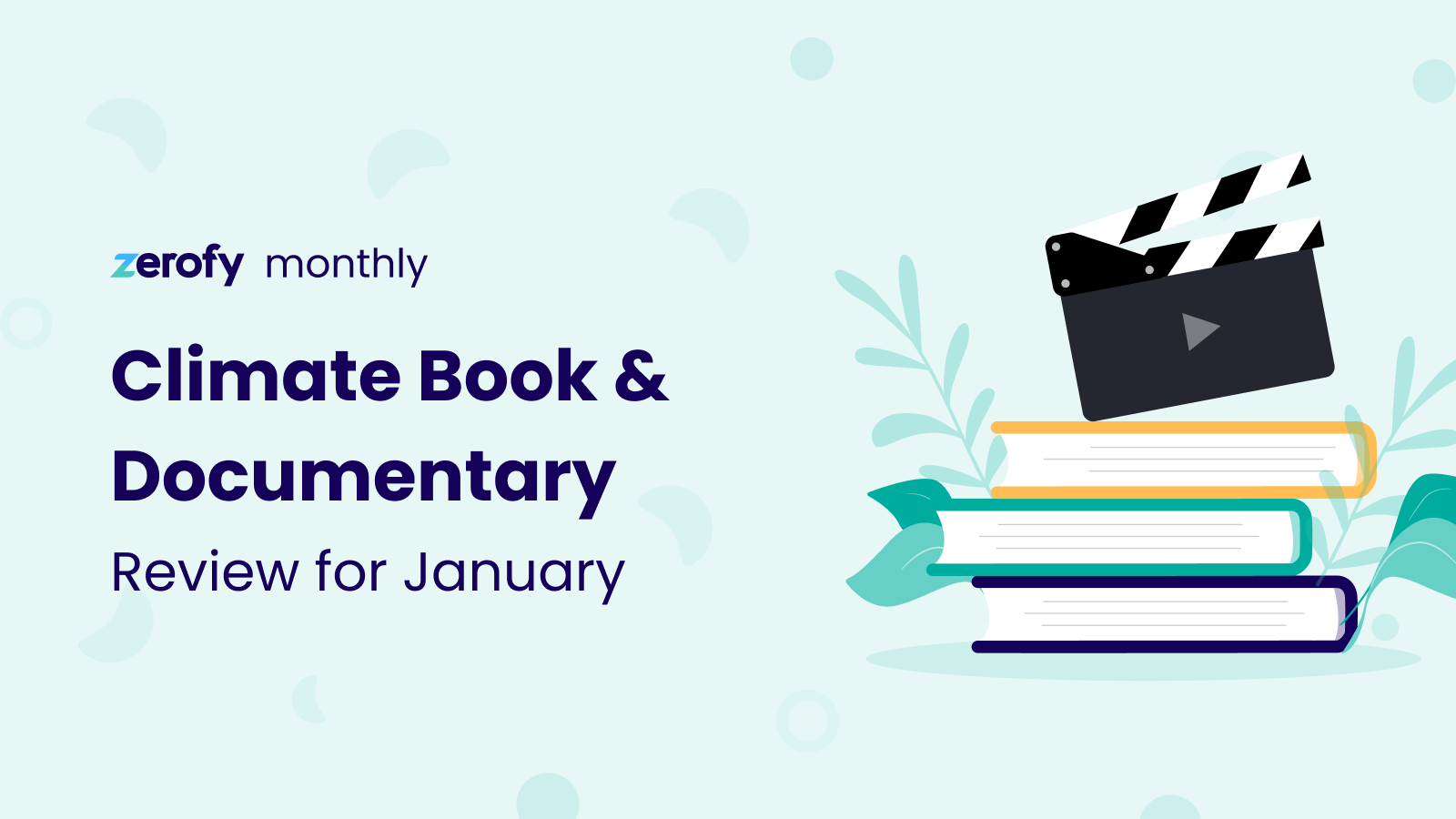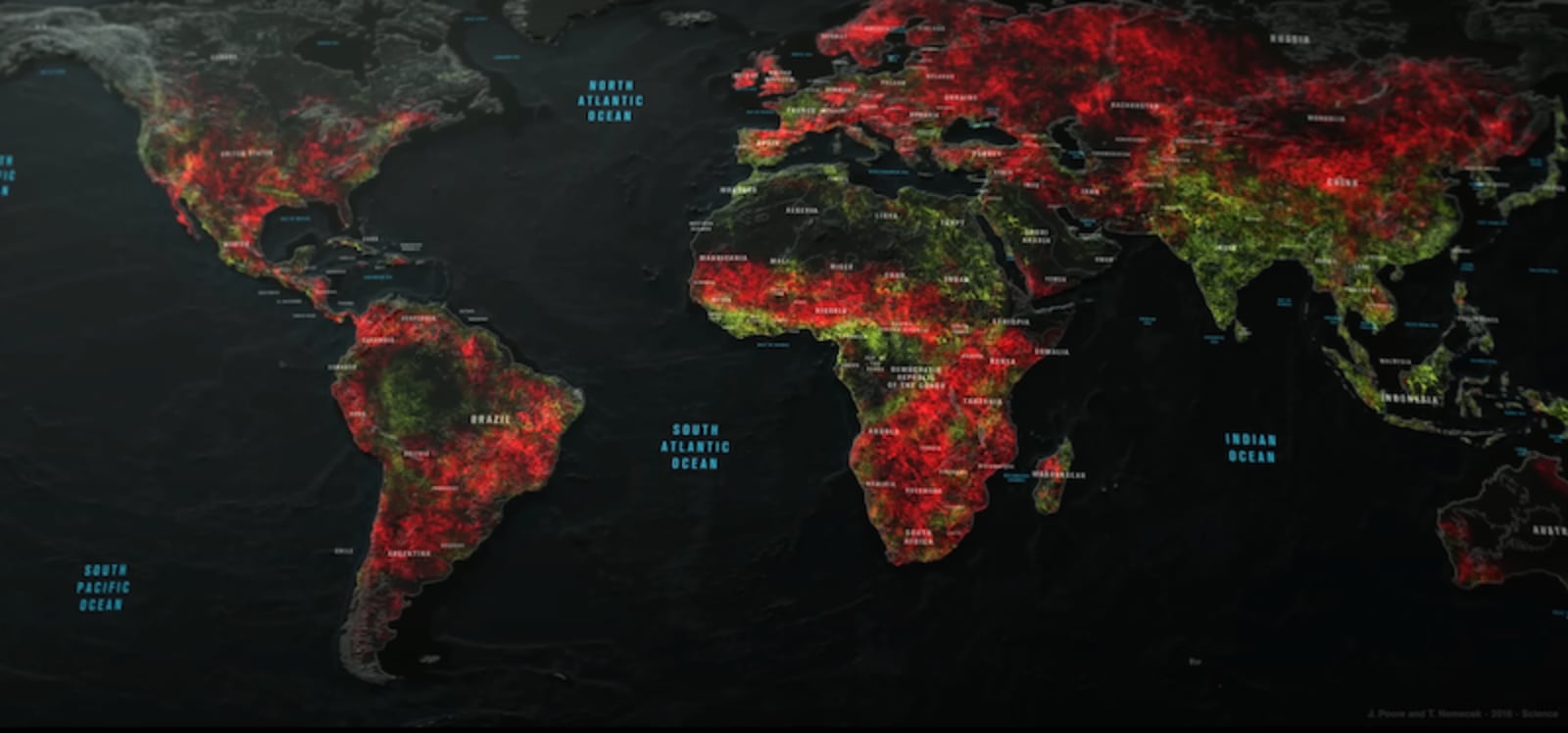
Welcome to Zerofy’s January Climate Book and Documentary Review! Once a month, we handpick and review a great book we read and a documentary we watched (and you can check out our last review here). Our focus for these reviews is on media that highlights the personal effects of a changing climate—and the actions individuals can take to make a difference.
Climate Book Review: How to be a Climate Optimist: Blueprints for a Better World by Chris Turner (2022)
How to be a Climate Optimist in a nutshell:
This book is a comprehensive analysis of the first quarter-century of the global energy transition. Author and journalist Chris Turner uses both his first-hand reporting experience as well as extensive research to provide analysis, reflection, and stories from the global effort to combat climate change. While acknowledging the tremendous amount of work that remains, Turner highlights the most promising solutions, industrial innovations, and coordinated efforts that have already taken place. In doing so, Turner argues that there is much to be optimistic about, and that optimism will be an essential element of this global challenge. The book is clear, balanced, and accessible for those who are concerned about climate change but don’t have a foundation in climate science.
About the author, Chris Turner
Turner is a Canadian journalist and author who has spent the last twenty years reporting on stories and innovations leading the energy transition. His work has focused on emissions-reducing strategies, as well as the scientists, policymakers, and entrepreneurs leading the way. Turner has written five books on technology, energy, and climate, and describes himself as having turned a corner over the course of his career, from climate pessimist to optimist.
Interesting concepts in How to be a Climate Optimist
1. Offhand miracles
Turner explains that the spark fueling his climate optimism is a phenomenon he has coined offhand miracles. These are the victorious arcs of innovation that move rapidly from the fringes to the mainstream and drive forward change.
To explain offhand miracles, Turner takes the reader back to the year 2000, when he was sent by Time magazine to what was at the time an obscure electric vehicle trade show. There he saw early prototypes from major automotive companies, but these vehicles were just a small side note in the industry. The range problems of fully electric vehicles had yet to be solved, and the attitude at the conference was that perhaps in twenty or thirty years these cars could possibly be seen on the road.
“But no one had the slightest notion, not the vaguest inkling or the wildest premonition, that what would actually happen was some weird, megalomaniacal engineer who was working at the time on the thorny problem of small-scale internet business transactions at PayPal would cash out a couple of years later, use his dot-com riches to take over a fledgling manufacturer of experimental electric cars, and turn that company into not only the first successful automotive start-up in America in more than half a century but also the maker of the first mass-market all electric sports car in history—all in barely more than a decade.” He presents Tesla under the helm of Elon Musk as an example of an offhand miracle—innovations that are hard to predict, progress very quickly and bring about significant transitions.
Other offhand miracles? In 2005, Turner went to the Danish island of Samsø, which was aiming to become the world’s first island powered entirely by renewables. Just fifteen years later, it surpassed its goal. And, in 2006 Turner visited a “hippie fever dream called an Earthship” in New Mexico. This house was designed to harness the natural heating and cooling of the sun, so it could be self sufficient energy-wise. Today, there is an eight-storey building in Vancouver, British Columbia, that uses this passive house design to do the same. And by 2023, every new house built in British Columbia will be built to a code broadly consistent with those “net zero” standards Turner first saw at the Earthship house.
2. Solutions need to have real value for decision makers—and do the job better than the status quo
In a chapter on the challenges of political will and climate action,Turner shares his experience advocating for a sustainable, multi-use development in his neighbourhood. In interacting with those who opposed urban density and transit-oriented design, he realized something important: if you’re going to win over people, you have to win them over to the value for them in your idea, not just the value in general. Additionally, he advocates for solutions that are not only good for the climate and reduce emissions, but that also just do the job better than the current available technology. He cites the recently released all-electric Ford F-150, and its ability to supply power to the home. It’s an electric car, but also a backup generator and an integrated home appliance. It’s better for the environment than the standard Ford F-150, but also just more inherently useful.
Notable passage
“I’ve been to the better world. I’ve talked to its architects and toured its facilities. I’ve seen the tools that work and the ones that don’t. When I say I’m a climate optimist, I mean that, in the face of the existential challenge of climate change, I believe the world will develop and implement better systems and technologies to meet our daily needs and reduce our global greenhouse gas emissions to somewhere very near zero in this century. It likely won’t happen in time to halt the permanent alteration of many of the planet’s ecosystems and prevent significant dislocation and suffering for millions of people, but it will occur with enough speed and thoroughness to leave a foundation for civilization durable enough for future generations to build their dreams on. And that’s about the same as any generation’s ever done for the ones to come.”
Read this book if:
- You want to be inspired by climate technologies, innovations, and approaches
- You want a good overview of the energy transition to this point
- You want a refreshing perspective on how quickly some solutions have scaled
Climate Documentary Review: Eating Our Way to Extinction (2022)
Eating Our Way to Extinction is a documentary that looks at the detrimental effects of animal agriculture on the planet, and what people can do to make changes. Narrated by Kate Winslet, the film features interviews with experts, first-hand accounts from people living in areas affected by climate change, and ends with optimism around how we can make more sustainable food choices. The film travels around the globe to see how people and communities have been affected by a changing climate, from the Mongolian steppe to the fjords of Norway. The documentary is free to view on YouTube.
Why we chose this documentary
One of the sources of emissions the Zerofy app tracks is food. We believe that making more sustainable food choices is a powerful way for people to signal the need for food system changes. We chose this documentary because it highlights that this is a global problem with the potential for great change with individual action.
Eating Our Way to Extinction also appealed to us because it heavily features first-hand accounts from people who are acutely experiencing the effects of their forests being cleared for animal agriculture. For example, there are poignant interviews with members of the Guarani-Kaiowá, an indigenous group in the Mato Grosso do Sul of Brazil, who have been forcibly removed from their land. The inclusion of these interviews takes the idea of land loss from a news headline to a relatable narrative happening to real people.
What we liked
1. Visualisations
Eating Our Way to Extinction comes across as a documentary with a big production budget, and one of the slickest elements in it is the use of great visualisations to convey concepts that can be either abstract or difficult to understand. One notable visualisation shows the areas of our planet used for growing crops intended to feed humans, overlaid with the areas used for animal agriculture. Seeing both together makes clear what a massive amount of the Earth’s land is used for animal agriculture, and illustrates how at this scale, animal agriculture has managed to have such a negative impact on the environment.

2. Amount and range of experts interviewed
It can be a red flag when a documentary only has a small number of experts sharing their insight. This documentary features dozens of experts representing the fields of nutrition, water management, ice science, oceanography, economics, policy, and agriculture, giving the film a well-rounded feel. Notable inclusions are Dr Sylvia Earle (Former Chief Scientist of NOAA and explorer) who explains the concepts of ocean dead zones and how they relate to agriculture, and Prof. Olivier de Schutter (Former UN Special Rapporteur) speaking on industry influence on dietary guidelines.
What we learned in this documentary
- Globally, to produce beef, we farm an area the size of North America, Central America, Venezuela, Colombia, and Ecuador, combined
- The world’s top five livestock corporations produce more greenhouse gas emissions annually than each of Exon Mobil, Shell, and BP
- Some algae blooms in the ocean are so large they can seen from space
- One third of all edible fish caught in the ocean are now fed to livestock and farmed fish
- Livestock farming is the leading cause of biodiversity loss
Interested in how your food choices contribute to your carbon footprint? Download Zerofy for iOS